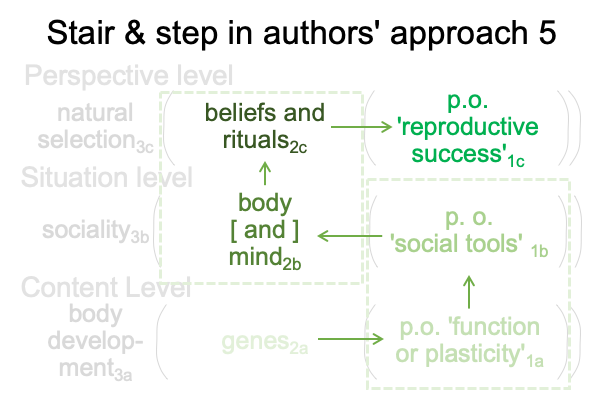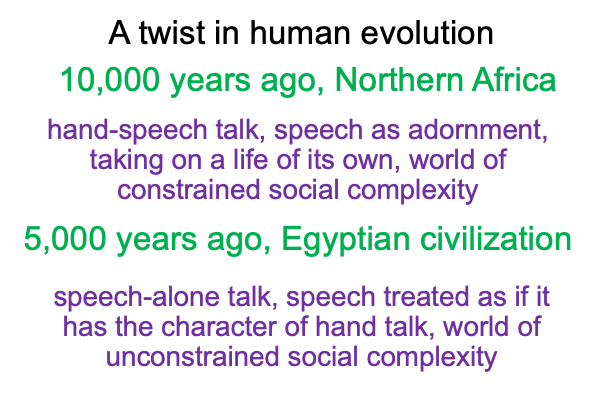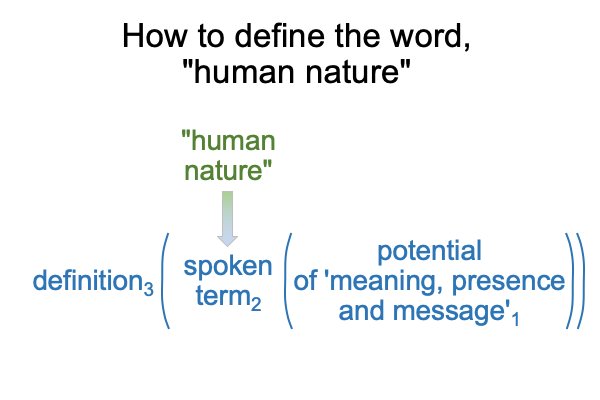Looking at Lesley Newson and Peter Richerson’s Book (2021) “A Story of Us” (Part 11 of 16)
0095 How does Razie Mah’s e-book, The Human Niche, differ from Newson and Richerson’s treatment of the Paleolithic, stretching (say) from 100,000 to 20,000 years ago.
0096 First, humans have enormous, energy-demanding brains. What are people using their brains for?
Are they responding to the frequent and dramatic climate changes during the late Pleistocene? Or, are they using their brains to explore the semiotic opportunities available to hand-speech talk? One language tradition contains two fully linguistic modes of expression. Plus, each mode of expression offers very different semiotic opportunities.
Initially, speech adorns hand-talk. What an adornment it is. Humans chatter like birds compared to other hominins of the Middle Paleolithic. Plus, adornment adds to every team tradition. Artistic artifacts appear more and more often in the archaeological record.
0097 Second, what types of abstraction are humans conducting with their hand-speech talk?
They are developing styles of implicit abstraction. The judgments of implicit abstraction are built into our bodies, our “phenotype”, due to our “adaptations”. One beauty of the way that the authors conflate “adaptation” and “phenotype” into one three-level interscope is that the situation-level actuality2b, a secondness2 within secondnessb, corresponds to the hylomorphes, body [and] mind2b, culture [informs] brains2b and social interactions [stimulate] hormone responses2b. These all speak to implicit, rather than explicit, abstraction. These hylomorphes are diverse and innate.
0098 So, when do we (humans) start performing explicit abstraction?
Or, is explicit abstraction an unintended consequence of an event where something went wrong?
More on that, later.
0099 Third, humans grow up to fit into a family. In this, Razie Mah and the authors agree. However, Newson and Richerson do not develop the themes of other social circles, such as intimate friends, teams (where linguistic hand talk first evolves), bands (today’s parties, bars and workplaces), communities (today’s neighborhoods, churches, and clubs), mega-bands (today’s sport bars, festivals and county fairs) and tribes (today’s political rallies and feast-day celebrations). All these entail sign-processing and yield implicit abstractions, an exemplar for culture [informs] brains2b. Imagine a world where all the social circles work in harmony. Now, that would be like “original justice”.
0100 Fourth, the family, in particular, celebrates male-female pair bonds. The family may be described as a three-level interscope, as portrayed in A Primer on the Family, by Razie Mah, available at smashwords and other e-book venues.
0101 Fifth, humans are built to endure starvation. The authors stand out on this point, I admit.
One would imagine that the first organ to shut down when there is not enough food is the energy-intensive brain. Forget that! Our bodies prepare for famine by accumulating fat. Lots of fat! When food becomes scarce, our bodies metabolize those stores of fat instead of turning off the brain. After all, the stomach has to complain to somebody, and that is the brain.
The authors shine in this vignette.
0102 Fifth, humans evolve to live longer than is necessary for only reproduction.
Of course, at 100kyr, most humans die of acute infections, other diseases, accidents, predators and people of different cultural phenotypes. Those who live longer become more and more valuable, not only to their own families, but to various teams, the band, the community, the mega-band and the tribe. These old folks know the timeless stories that contain valuable information, particularly about rare events.
Sudden changes in the Pleistocene climate may be separated by hundreds or thousands of years. The old folk keep precious memories.











